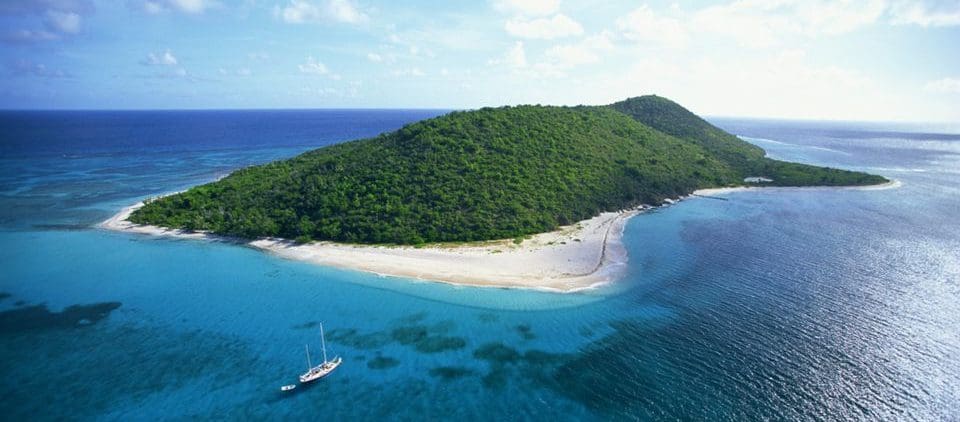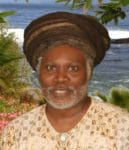
The incident that took place on Buck Island Reef National Monument in January, where a shooting occurred and left one person injured, was very unfortunate. The rise of crime in the Virgin Islands has now spread to smaller offshore islands from the major populated islands. Buck Island should not be a place for crimes, but a place of tranquillity to the human spirit. Gov. Albert Bryan Jr. stated in response to the shooting on Buck Island, “We also have to be good stewards of the precious natural resources at the Buck Island National Monument, that is why we are going the extra mile to keep Buck Island accessible to everyone.”

This will be a two-part series focused on Buck Island’s cultural, natural, and marine resources. First of all, I found that we are not a very patriotic people when it comes to the protection of our culture, natural resources, and history of the Virgin Islands. We tend to gravitate to other cultures rather than our own. There might be reason for the lack of knowledge of ourselves as Virgin Islanders. What I am addressing here briefly is the connection and rich cultural history of Buck Island Reef National Monument to the people of the Virgin Islands.
We tend to look at Buck Island as sand, beach, sun, and fun. That might be all good and well. But the cultural history of Buck Island is deeper than swimming and snorkeling in one of the finest marine gardens in the Caribbean or the world. According to archaeologists, the Amerindians migrated to St. Croix over 2,000 years ago from the Lesser Antilles and the Lower Orinoco River of Central America and the coastal areas of Guyana.
These indigenous people were the first to inhabit Buck Island. They fished, hunted large kallaloo crabs and gathered conch, sea turtles and their eggs. Archaeological research revealed that the indigenous people lived in the coastal region of Buck Island and left behind conch shells, pieces of pottery, etc. Since the 1700s, enslaved Africans were sent to Buck Island by the European colonists of St. Croix to harvest lignum vitae trees to build sugar mills, great houses, to be used for medicine, and to gather lobsters, shellfish, land crabs, and to tend to goats and sheep that were taken to the island to graze.
The list of owners of Buck Island is long. I will mention a few. In 1754, Buck Island was known as Diedrichs Estate, named after Johann Hendrich Diedrichs, the first person to settle the island according to historical records. Diedrichs constructed the first buildings dwelling on Buck Island and lived there along with 14 people; 12 of them were enslaved Africans. He owned the island until 1773. In 1773, Nicholay Salamons from St. Eustatius, owner of Mt. Welcome Estate on St. Croix, purchased the island. He also owned Buck Island with two free and two slaves inhabiting the island.
Later on, Joseph Coakley acquired the island in 1775; he probably was relative to the Coakleys that once owned Coakley Bay Plantation on St. Croix. John Heyliger Abrahamsen was the caretaker and taxpayer of Buck Island. He would serve in this position again in 1818 and from 1823 to 1826. John Benners also served in this position from 1779 to 1802 when he was replaced by John de Graff Godette.
Whenever I conduct tours on Buck Island, which are hundreds over the years for locals and visitors, we hike the island trails. However, there is one spot we stop that is very sacred to Virgin Islands cultural and marine archaeological history. Believe me, when you leave Buck Island, you are a different human. Among the cultural marine resources of Buck Island, of which there are many, there are shipwrecks. Literally hundreds of shipwrecks are along the ocean floor in the waters surrounding the British and U.S. Virgin Islands. We know of two 18th century slave shipwrecks off the north coast of Buck Island, Mary and General Abercrombie. In March 1797, the slave ship Mary captained by James Hunter of Liverpool struck Buck Island reef off the north bank of the island and sank. The slave ship had 240 slaves, but they were saved and brought into the Christiansted jail.
The second slave ship was General Abercrombie, owned by a wealthy Tobin firm. On Feb. 28, 1803, the slave ship sailed for St. Croix with goods and 339 slaves and struck the reef off the north coast of Buck Island. James Booth of Liverpool was the captain of the slave ship. The ship began to take on water immediately, causing chaos for the crew and several hundred enslaved Africans below the deck cramped like sardines in a can.
As a result, goods were thrown overboard, and slaves spent the night at sea in the wrecked ship while the crews were rescued and brought to Christiansted. The following day, the slaves were rescued and locked up in the Christiansted jail. The cries of the enslaved Africans over 200 years ago can still be heard if you listen carefully to the waves of the north coast of Buck Island splashing up against the rocky and sandy shore.
Buck Island is special in our cultural and marine history. Slaves worked the land on Buck Island. They survived the rough seas in the area where the ships went down and where they were left to die. The wrecks of the ships, which lie today at the bottom of the ocean, are testimonies to the resilience of the enslaved people.
According to historians, there are five cultural resources that have been recommended as potential National Register of Historic Places sites. They are the Signal Station site, Buck Island Prehistoric site, Foundation site, West Beach Historic or Goby site, and the Bigeye/West End Historic Midden site. “These sites could contribute useful information about the lifeways and subsistence activities, and related economic issues from colonial times to the present,” wrote Cultural Resources Specialist Diane Rhodes about Buck Island history. When you visit Buck Island, explore the island’s natural and cultural resources. Shooting has no place in Buck Island cultural history.
Olasee Davis is an Extension Professor/Extension Specialist in Natural Resources at the University of the Virgin Islands who writes about the culture, history, ecology and environment of the Virgin Islands when he is not leading hiking tours of the wild places and spaces of St. Croix and beyond.





